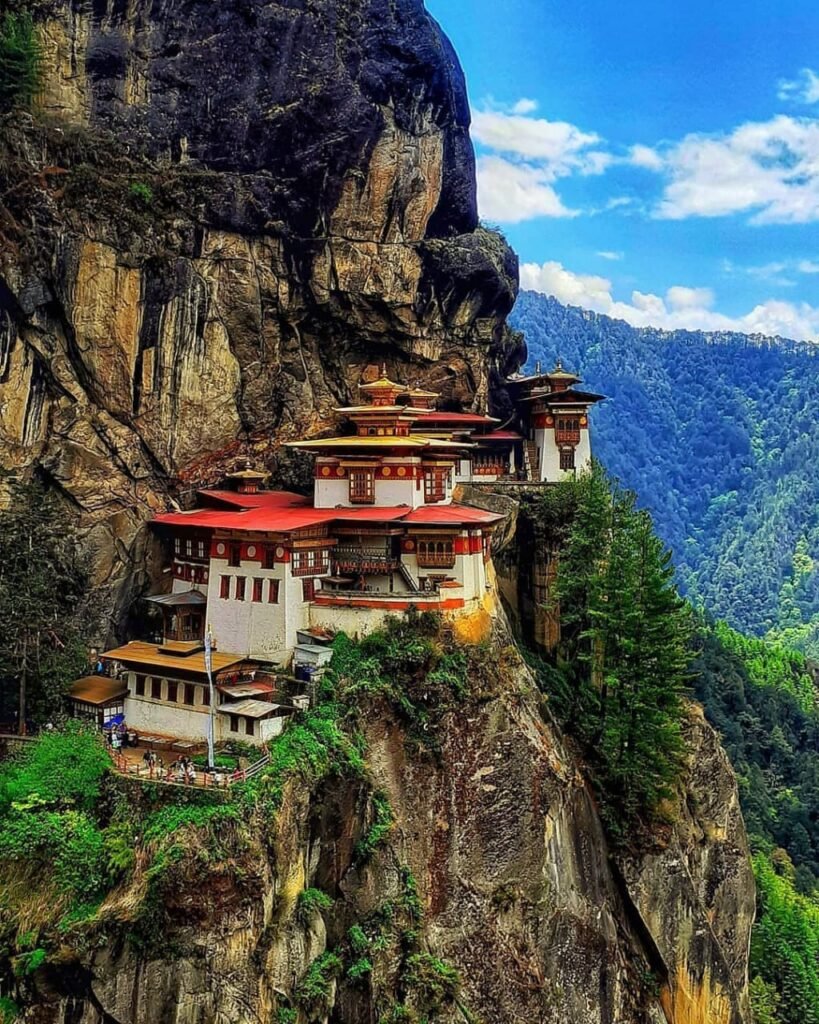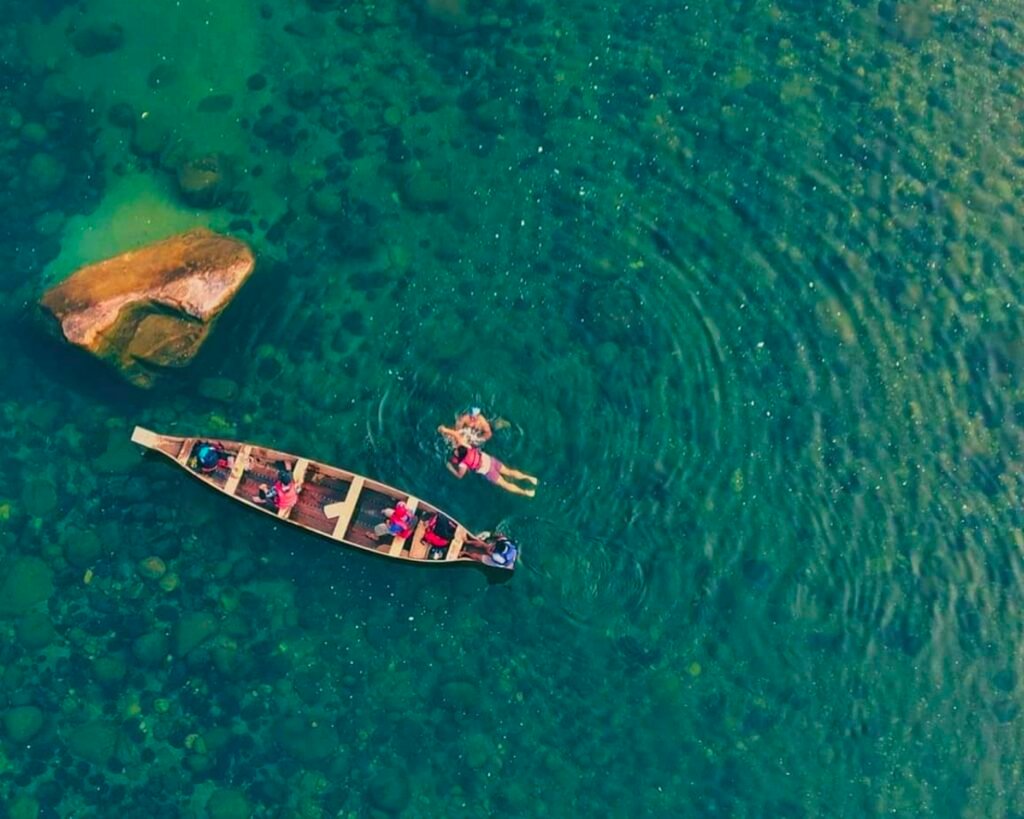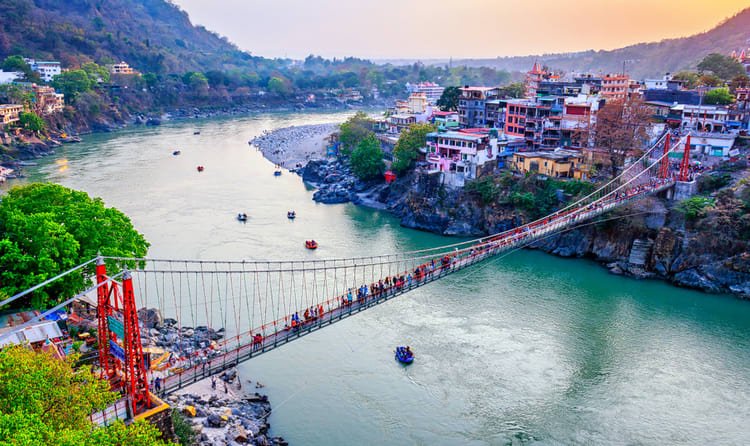Bhutan, a small landlocked country in the Himalayas, is amongst the least known tourist destinations in the world. Dedicated to environmental tourism, the country limits the number of people who visit it at any time, which makes entry into the country very complex and requires that all visitors make a pre-arranged visit.
The main attractions of Bhutan are located in the central and western regions, mainly Thimphu, Paro, and Punakha. Here you will find iconic Buddhist places, an impressive excursion through the Himalayas and the cultural heart of Bhutan. If you are preparing a trip to the great kingdom of the Himalayas, here is our list of the top 10 best places to visit in Bhutan.
1. Thimphu Valley

Thimphu, the capital and largest city of the kingdom, is located in the western part of central Bhutan. Moreover, it is one of the most impressive valleys in the country. Given the status of capital in 1961, Thimphu took over Punakha. This was the ancient capital of the kingdom which housed the religious leaders of Bhutan before crowning his royal family. A city is a popular place that is located on the banks of the Wang Chhu River. Although the city does not have a dazzling nightlife for the younger generation of visitors. But, it is full of incredible and surprising places to visit, including the Tashichho Dzong, the ancient fortress-monastery on the outskirts of the city which housed former civilian leaders of the government of Bhutan.
2. Buddha Dordenma Statue

Erected in the mountains to celebrate the 60th birthday of the fourth king of Bhutan, Jigme Singye Wangchuck, the Dordenma Buddha statue is one of the largest Buddha rupees in the world. And, it measures 52 meters high, with over 125,000 small Buddha statues inside. Made in the form of the seated figure of Buddha Sakyamuni, the project cost more than $ 100 million. Around the Buddha statue is the Kuensel Phodrang Natural Park. Moreover, the National park is a 943-acre wooded area that was opened in 2011 to allow site tourists to relax in a calm and peaceful environment. Interestingly, the Padmasambhava predicted the construction of the statue by himself in an ancient thermal spring dating back to the eighth century. Further, it was repeated by the yogi Sonam Zangpo in the early twentieth century.
3. Paro Valley
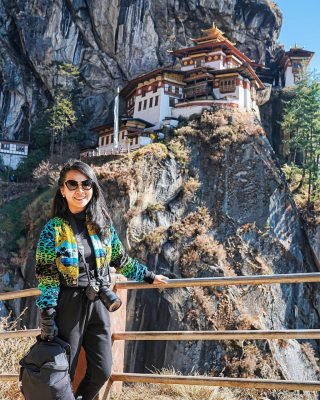
Paro Valley, Bhutan’s second city is the first place you will see when you enter the country. As it has the only international airport in Bhutan. Located along the Paro River, it has been the land of many monasteries since the 10th century. Moreover, it has been the fortress of northern Bhutan against the invasion of Tibet. The main street of the city is full of rich and complex architecture, with traditional Bhutanese shops and houses vying for space with restaurants and cafes. Paro is also a good place for unique Buddhist antiques and souvenirs, as well as many artifacts related to prayer, although antiques cannot be removed from the kingdom.
4. Taktsang Monastery

At over 800 meters above the Paro valley, perched on a ledge in the middle of the mountain cliff, stands the imposing Taktsang monastery or “Tiger’s Nest”. Renowned throughout the world for its unique and spectacular location, this has become a legend in Bhutan and in many regions of Asia and the world where Buddhism resides. It is the meditation place for Guru Rinpoche (Padmasambhava), who first brought Buddhism to Bhutan. According to legend landed on the mountain after overflowing a giant tiger who would have been a husband known as Yeshe Tsogyal’s name. After meditating in the 13 ledge caves for three years, three months, three weeks, three days, and three hours, he emerged in eight demonstrations and the place became holy. The monastery of 1692 around the caves has become a cultural icon of the Bhutanese people.
5. Rinpung Dzong
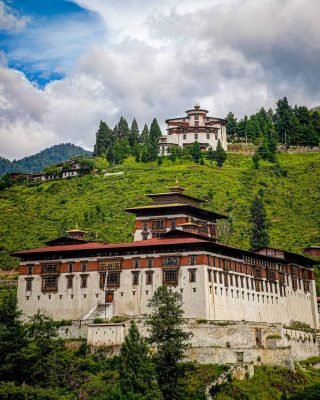
Rinpung Dzong, a large monastery and fortress of the Kagyu Buddhist school in Bhutan. It is one of the most famous temples in Bhutan. Also, it houses the region’s monastic government body. One of Bhutan’s “temporary” sites on UNESCO’s inclusion lists for future world heritage sites. The Buddhist lamas delivered the dzong site in the 15th century, further building a small temple on it. The Zhabdrung Rinpoche handed over the temple in the 17th century. Who demolished the previous structure and built the dzong which is still preserved there. It was again consecrated and became the monastic and administrative center of western Bhutan in 1646. Dzong also appeared in the 1993 film The Little Buddha.
6. Chele La Pass
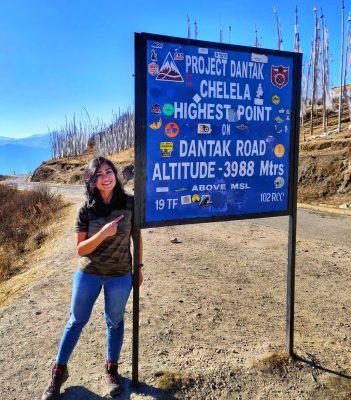
Considered the highest vehicle-accessible pass in Bhutan. At around 3,989 meters above sea level, Chele La Pass is one of the most popular places to visit in Bhutan. Located above the pristine forests of the Haa valley in the Paro district. The pass offers a breathtaking view of the waterfalls, forests, and alpine valleys that surround it. Just over two hours from Paros, the passage road passes through dense forests and crosses rivers and waterfalls with impressive landscapes. Along the path leading to the pass, there are hundreds of prayer flags decorating the poles to drive out demons and evil spirits
7. Punakha Dzong

Also known as Pungtang Dewa Chhenbi Phodrang, which translates to “the palace of happiness and happiness”. Punakha Dzong is a 17th-century monastery and first Bhutanese Zhabdrung Rinpoche built it. And is the second most popular Buddhist dzong the elder of the kingdom. Formerly the administrative seat of government in Bhutan until 1955. The dzong houses some of the most sacred Bhutanese relics of the Drukpa line of the Buddhist Kagyu school. As well as the sacred remains of the 1st Zhabdrung Rinpoche. The dzong was also the wedding venue of King Jigme Khesar Namgyel Wangchuck and his girlfriend, Jetsun Pema, in October 2011. Which was the first national television program for the Bhutanese people?
8. Phobjikha Valley
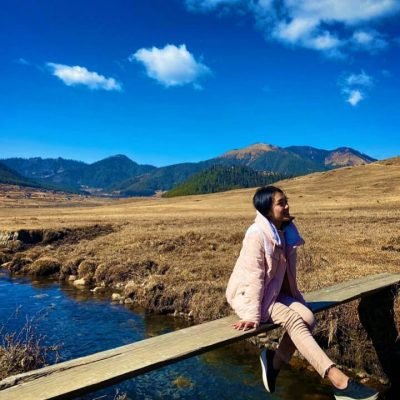
Also known as the Gangteng Valley, the Phobjikha Valley is a huge U-shaped glacial valley in central Bhutan. Which is home to the famous Gangteng monastery? The valley is famous for the rare black-necked cranes that visit the region in winter from their summer home in Tibet. When the cranes arrive in the last week of October. They go around the roof of the Gangteng Monastery three times before landing in the wetlands of the valley. And repeat this unique process when they leave for Tibet in March. The reason why cranes do this is unknown, and Buddhists see it as an auspicious sign or omen. The whole area of the valley where cranes perch for the winter is protected. The best swamp in Bhutan, the valley is full of different plants and is home to more than ten species of protected birds and animals. The three-day trek through the valley is popular. The hundreds of bird watchers come to the area in October and March to witness the incredible crane show.
9. Chomolhari
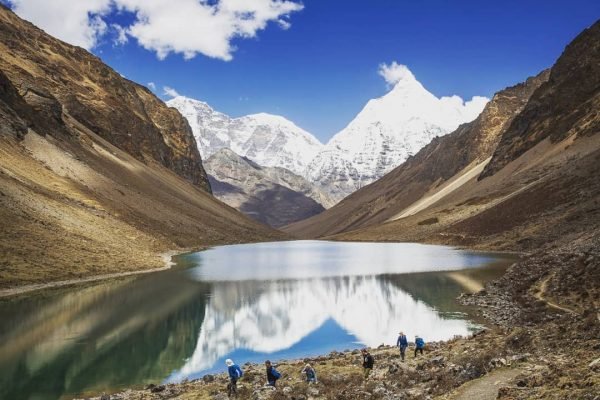
Also known as Jhomolhari, this huge mountain measures 7,326 meters, but it is not the highest mountain in Bhutan. Sitting astride the border between Bhutan and Tibet, the mountain is the source of the Amo River. Which flows on the north side of the mountain, and the Paro river which flows on the south side. Known as the “Bride of Kanchenjunga”. Bhutanese Buddhists believe that it is the home of one of the five Tsheringma sisters. Padmasambhava forced the protective female goddesses of Bhutan and Tibet to protect people, land, and Buddhists. On the south side of the mountain, at 4150 meters, there is the Chomolhari temple. The temple welcomes the religious pilgrims who visit the mountain. Only an hour’s walk there is one of the highest lakes in Bhutan, the Tseringma Lhatso, or “lake spiritual”.
10. Jigme Dorji National Park
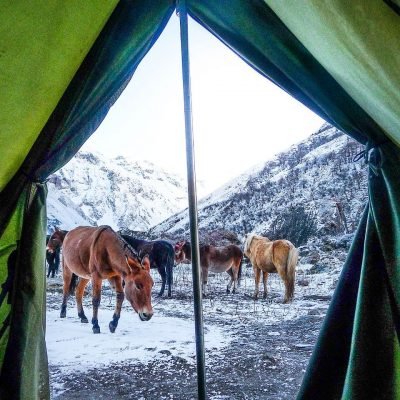
In 1974, Jigme Dorji National Park was established a scenic and wild area. To protect native species of endangered animals in Bhutan. Which over 37 reside in this area which covers more than 4,300 square kilometers. From an altitude of 1,400 meters to over 7,000 meters. It hosts rare species of mammals such as the Bengal tiger, the clouded leopard, the snow leopard. Also, the Indian leopard, Himalayan black bear, and the famous Bhutanese Takin. Being rich in flora, the park is also home to many species of deer, goral, and sambar. As well as thousands of varieties of native and migratory birds. With several sites of cultural and religious importance within its borders. Moreover, the park also offers its visitors a very spiritual experience.
Suggested Reads- Nepal

